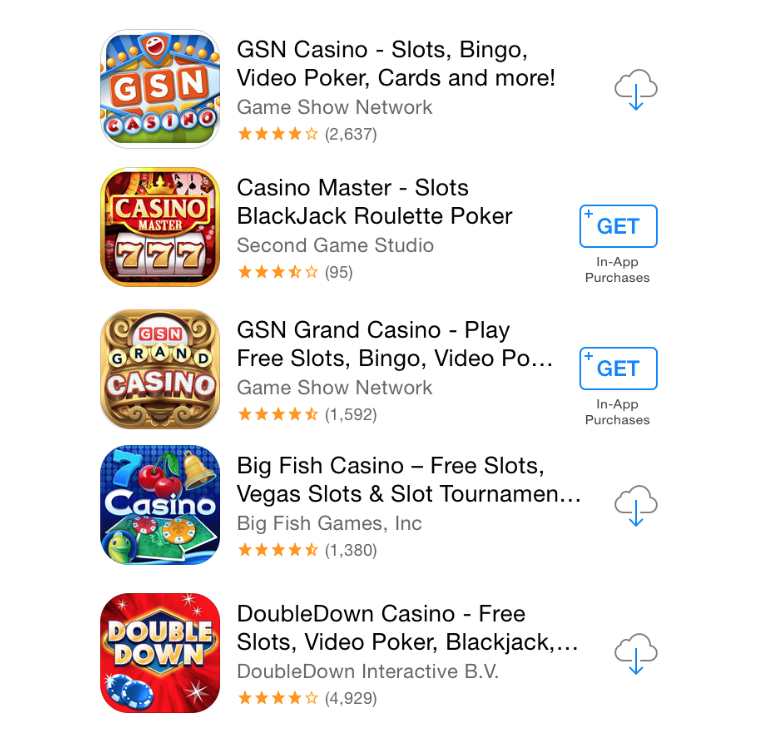· 8 min read
App Store Optimization For Game Developers

Trevor McCalmont
Content crafter and analytics buff at GameAnalytics
App Store Optimization, or ASO, is an essential marketing tactic for most game developers. App Store Optimization refers to improving an app’s keywords, description and other attributes in order to rank higher in that marketplace’s search results. Making your app more visible on its respective platform earns valuable organic (unpaid) downloads.
What’s better than free downloads? Many mobile game companies cite organic users as the most valuable type of users. They are more engaged than users acquired through advertising. They monetize at a higher rate than users acquired through advertising. As reported by TUNE, the majority of app users find new apps by searching the app marketplace, but neither Apple nor Google publish exactly what goes into their search algorithm. Below are a set of best practices to increase your organic downloads and app store visibility.
Competitive Keyword Analysis
Before diving into the nitty gritty of ASO, you’ll want to research your current and potential keywords. There are many tools for both keyword planning and keyword spying. These tools let you know what an app currently ranks for. They also recommend similar keywords and show what competitors are using as their keywords.
Since the App Store layout change from iOS 6, Apple users scroll through fewer results. It’s more important to appear near the top of the search results. With this in mind, focus on keywords where you can rank in the top ten results for that search query. For app marketers familiar with SEO and SEM, this is akin to going after long tail keywords. Major brands and established apps have an easier time ranking well for high volume keywords. But for the average mobile game developer, there is a larger opportunity in going after less competitive keywords.
The App Store field for keywords only allows 100 characters. Keyword planning and spying tools like Sensor Tower and App Annie facilitate keyword research. With only 100 characters to work with, using smart and efficient keywords is critical.
Google Play does not use a keyword field. We’ll discuss these keywords later, but researching and planning is still hugely important to ASO on the Android side. Google Play displays either rows or tiles of search results depending on the device. Android users may see more results for their app store queries, but ranking in the top ten yields the best ASO results regardless of platform.
Mechanics of ASO
There are many attributes that affect app search results, and some vary by platform. For example in the App Store, there is an explicit keyword field where developers enter their keywords. On the other hand Google Play crawls the app’s description for keywords. Like the keyword field above, we’ll make note of these discrepancies along the way.
Use a Descriptive Title
On the iOS platform, there are two different app titles. The bundle display name and the iTunes Connect app name. The bundle display name is what appears on a user’s phone. This title should be 11-14 characters long and has no impact on ASO. The iTunes Connect app name is what appears in the App Store and has a 255 character limit. This title doesn’t need to use the full 255 – in many cases that would be excessive. However, it should be descriptive and include strong keywords.
Apps rank higher for keywords placed in the title field. The title field is one of the most underutilized elements of ASO. Take the hyper-competitive Casino category. Below are the top five results for the query “casino” in the App Store:
All the above apps have at least six words in the title and anywhere from 40 to 100 characters. They all use many of the same casino-related keywords directly in the title.
Some app marketers argue that a long title is bad branding or an ellipsis at the end of the title is detrimental to a company’s branding. However, it is clear based on Apple’s search results that keywords in the title drive downloads. To maintain the brand experience, add a dash or colon after the app’s name like in the image above.
Google only allows 30 characters in the app’s title. These keywords are still important, but there is less opportunity in terms of ASO. On Google Play, the majority of ASO lies in the description.
On both platforms, it is well documented that changing the title frequently will hurt an app’s rank for keywords. Decide on a descriptive title for your app that includes multiple essential keywords.
I’m On Google Play. Where’s the Keyword Field?
As many game developers who have an app on Google Play are already aware, Google has no keyword field. Google crawls the description to gather keywords. The best practice is to repeat any major keyword five times. The description field on Google Play will be read by both human users and text crawlers. Make sure to write the description in a way that is friendly to both groups.
Apple does not currently use the description field for ASO purposes. This section is still important in helping users understand what your app is about and why they should download it.
A Picture is Worth 1,000 Words
Ok, that’s not quite true. But having an eye-catching icon and screenshots are essential for grabbing a user’s attention. Each app has a precious few seconds to show a potential user why they should install. Screenshots can show the user interface, gameplay, what makes your app unique, what problem your app solves or any other variety of activities. The important thing is that the screenshots are engaging.
Google Play has room for eight screenshots and the App Store allows five. In either case, the best screenshots should go in the first and second positions.
In addition to the screenshots, both Apple and Google also allow developers to upload a short video. Creating a game trailer is the ultimate opportunity to show a user why your app is amazing. Twenty to thirty seconds of gameplay will be more impactful than screenshots in most cases.
People Influence People
Ratings and reviews are another component of App Store Optimization. These pieces of user feedback don’t carry as much weight as the keywords or title, but can have an impact on how well an app ranks in the search results.
Between the two platforms, Google Play places more of an emphasis on ratings. Users will rarely see an app with a rating below 4.0 in the top ten for a competitive query. If you have any uncertainties about how users will respond to your app, it may be worthwhile to soft launch your game for a multitude of reasons including the impact on ASO.
It is rumored that Google also includes engagement data and uninstalls in their ranking algorithm. GameAnalytics can help improve these metrics, which we will cover in our upcoming post on Tutorials and First Time User Experience.
Localization
If you are uploading your app to multiple countries’ app marketplaces, localize the app to each country. It is only logical that users will download an app more frequently if it is offered in their primary language. Both Apple and Google have guides on how to make the translation easier. Consider adding updated screenshots as well as offering support for each language to achieve the most effective localization. Localization can be tricky without a native language speaker. However, this will help cultivate the app’s user base in multiple countries.
——————–
As with any analytical pursuit, it is important to set goals and expectations. Implementing ASO best practices will not launch your mobile game to the top of the charts overnight. ASO is a gradual process. However, once you have implemented App Store Optimization, downloads will increase, users will find your app more easily and you will rank higher compared to your competitors. Be sure to continue to track your keywords throughout the process, and keep an eye on how many organic downloads you see each day.
TL;DR: App Store Optimization Key Takeaways
- Use a keyword research tool to learn how you currently rank for keywords and see what keywords your competitors are targeting Add your most important keywords to the app’s title
- Focus on keywords where you rank high in the search results – top ten is best
- On iOS, keywords come from your title and keyword fields.
- For Google Play, keywords come from your title and description fields. Important keywords should be included about five times.
- Localize apps where possible. An app optimized for English won’t rank well in a Japanese app marketplace.
